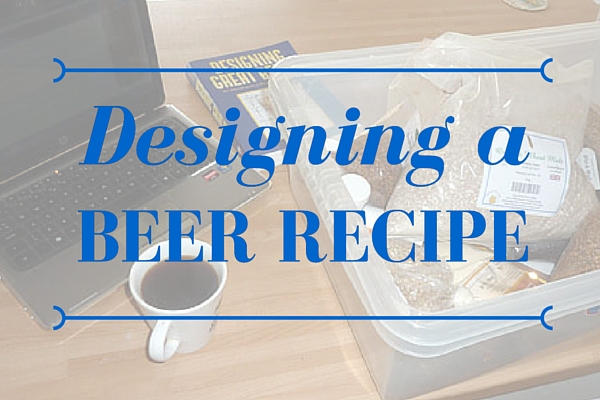Weizenbock Home Brew Recipe Design Process
I have wanted to talk about designing a beer recipe for a while and now the opportunity has arisen. If you are anything like me, you will have a box full of half used malts and grains that you end up with after brewing other beers. You need to be careful about storing things for too long, I reseal malt bags straight after using them but look in the picture, I have small amounts of quite a few things. Today I decided to come up with a recipe to use some of the odds and ends that I have lying around.
A couple of things I will point out before I run through everything. This is going to be a small batch, I’m using up leftover ingredients. This recipe is being formulated to brew in a 12 litre stock pot on the hob, this will include both mashing and boiling (this is a great way to start brewing all grain and I think perfectly do-able). My final brew length will be roughly 16 pints so I am pushing the % ABV slightly higher and bottling in 330ml bottles.
Everything about this beer would be the same for a longer brew length expect I am brewing less of it. I will post the recipe for my 9 litre brew length but of course if you wanted you can adapt it.
Table of Contents
Beer Recipe Design 101
Picking Your Ingredients
As the introduction states, I have decided to use up some of the old grains I have, stored away. So first off I had a look at what was available and that was an abundance of wheat malt, so naturally this is going to be the base malt for my beer, I also have a fair amount of Munich malt.
I know from reading various books that these two malts make up the bulk of the grist of a Weizenbock, usually when designing a recipe I decide what I want to make, then find out what malts are required (or are standard for that style).
A couple of ways you can go about researching your standard ingredients for a particular style of beer are:
Recipes – Go online to a recipe site like Beertools and look at their recipes for a particular style, find out what is common for brewing that style and what techniques are used.
Books – Obviously your books will have recipes as well so check through these. I highly recommend you go and buy Ray Daniels – Designing Great Beers, he covers most styles and tells you what you need to know about brewing them.
Forums – The Home Brew Forum and Home Brew Talk contain a wealth of information and you can glean a lot of helpful hints whilst designing your beer from others who have done so already.
Ingredients For My Weizenbock
Now, I know I’m brewing a Weizenbock, so I went and looked at some recipes and flicked through Designing Great Beers. I decided I wanted to spend as little as possible and use as much of what I had around so I came up with this recipe.
Batch Size: 9 Litres
Original Gravity: 1.073
Final Gravity: 1.019
ABV: 7.1%
Bitterness (IBU): 25.2
Est. Colour (EBU): 32.6
| Amount | Item | Type | % or IBU |
|---|---|---|---|
| 1.50 kg | Wheat Malt, Ger (3.9 EBC) | Grain | 53.57% |
| 0.55 kg | Pale Malt, Maris Otter (5.9 EBC) | Grain | 19.64% |
| 0.35 kg | Munich Malt (17.7 EBC) | Grain | 12.50% |
| 0.20 kg | Crystal Malt | Grain | 7.14% |
| 0.20 kg | Dark Crystal Malt | Grain | 7.14% |
| 20.00 gm | Tettnang [4.50 %] (60 min) | Hops | 20.3 IBU |
| 8.00 gm | Tettnang [4.50 %] (20 min) | Hops | 4.9 IBU |
Looking at the Weizenbock style guidelines I decided because I had some crystal and pale malt to keep things simple and typical German hops in the form of Tettnang only for balance in the beer, from everything I have researched I know Weizenbocks are malt driven beers. However I am slighlty worried that the depth of flavour won’t be their because I am using a dried yeast rather than an actual Weizenbock yeast, so I decided to include a few spices in the recipe.
| Spice | Amount |
|---|---|
| Orange Peel | 7g |
| Allspice | 1/2 tsp |
I am a great fan of spiced beer and it’s been chilly where I live recently so I decided on this mix of spice. Although I am calling it a Weizenbock this recipe is starting to drift away from the style somewhat.
Brewing Processes As Part Of Your Recipe
Now you can see I have used a variety of sources to get some information on typical ingredients of a beer style. I now need to decide how to brew it.
Mash Schedule: I decided because of my lack of space and equipment to use a standard infusion mash with a batch sparge. I did consider putting in an acid rest to increase clove character in the beer but considering I am spicing the beer, decided it was too much bother for this beer when I’m only making a small batch.
One thing I would point out with this particular recipe is that because there is a high proportion of wheat, you might find sparging a pain because wheat tends to be gummy and cause stuck sparges. In this case you might want to add rice hulls to help. The rice hulls will help running the liquor through the mash bed.
Hop and Spice Additions: As I said before the hops are there for balance mainly so there are no late hop additions or dry hops and spices will go in at the end of the boil.
There we have it, a guide to designing a beer, in this case Weizenbock.





Leave a Reply
Want to join the discussion?Feel free to contribute!